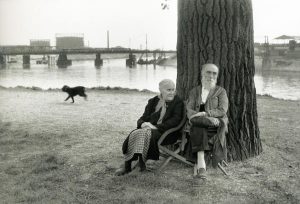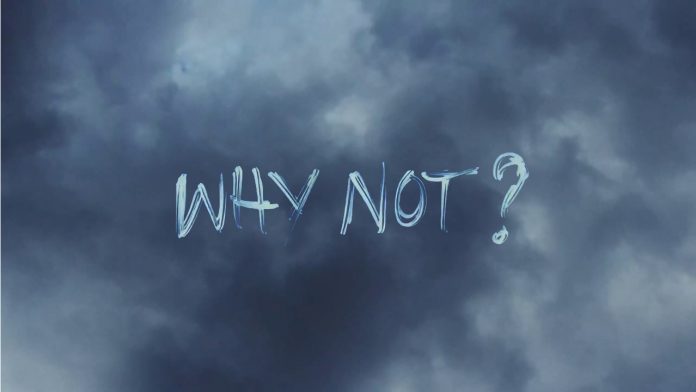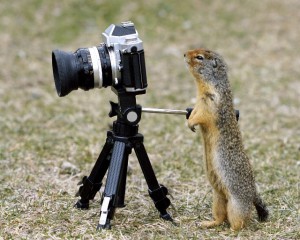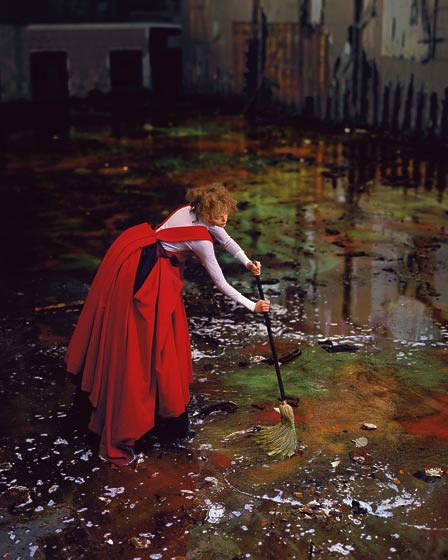INTERVIEW WITH PHOTO CLASSIC: HENRI CARTIER-BRESSON
 Henri Cartier-Bresson: For me, photography is the simultaneous recognition of the significance of an event, as well as the determination of its exact form in a split second, which gives this event a special expressiveness. I believe that a thinking person, having known himself, at the same time discovers the world around him, which can change him, and which he himself can influence. There must be a balance between the inner world of a person and the outside world. As a result of constant influence on each other, these two worlds will merge into one. And it is this one world that is worth revealing (in the photo).
Henri Cartier-Bresson: For me, photography is the simultaneous recognition of the significance of an event, as well as the determination of its exact form in a split second, which gives this event a special expressiveness. I believe that a thinking person, having known himself, at the same time discovers the world around him, which can change him, and which he himself can influence. There must be a balance between the inner world of a person and the outside world. As a result of constant influence on each other, these two worlds will merge into one. And it is this one world that is worth revealing (in the photo).
But this is only the content of the photo. For me, content is inseparable from form. By form, I mean strict geometric organization of lines, textures and values. Only in such an organization, our emotions and intentions become concrete and clear. In photography, visual organization is the result of a developed feeling. First of all, I should note that this is a rule that I set for myself, some discipline, but not a school … Something very personal. And I think that we cannot separate the subject of our thoughts from the form in which we express them.
Photography is partly a mental process. We need to know what we want to talk about. Our opinion is that we think about a specific situation, a specific problem. Photography is a way to sketch our thoughts, to write them down. We can recognize the visible form of these thoughts every day in the world around us. We need to be careful and know when the crucial moment comes. And then entrust all intuitions. This is an instinct. We do not know why at this particular moment you need to click on the button. The moment has come. Word of it. Everything turned out as it should, lacking only a chance, so you have to get a chance to work for you.
There is very little creativity in photography. The artist creates like a writer, and the photographer needs a decisive moment. I saw it, I was there.
In 1930, when I began to photograph, there were almost no photographic magazines, there was no market. I shot what I was interested in, or amazed me. I kept a kind of diary. I still lead him. And later appeared magazines. When working as a reporter, you should always work for yourself, express your thoughts. Editorial offices provide an opportunity to be in the thick of a world event, and the photographer has a chance to tell a large audience about this event from his own position.
Q: Does work for a large audience influence your attitude to photography? Or do you still follow your own principles, the same intuition?
Henri Cartier-Bresson: I trust my intuition. Of course, you need to know what position the journal needs, but not to work for the editor, but to work for yourself and the event.
And: In your photographic essay, you talked about different countries. Arriving in the country, you live there for some time?
Henri Cartier-Bresson: It’s impossible to just come and go. It takes time to understand people, to feel the scene. There is a certain idea about each country in advance, but when you come to it, this idea can change for the better or for the worse, and you should never reflect your old, wrong idea in the photographs. Of course, both reality and your impressions speak of themselves. It is important that the first impression is always fresh, as when you first met with a stranger. Maybe later it will seem to you that you misunderstood something. Because they did not notice something, some kind of smile, something important, what was the spirit of this country.
Q: Could you give me an example? You worked in India, in a country about which the West had some kind of exotic idea. Did it change when you first got there, and how did this performance affect your work and approach to people?
Henri Cartier-Bresson: Comprehension does not come immediately, but gradually, it is not sudden. It can not be sudden: you need to live in the country, get to know people, improve relations, find yourself on an equal footing. You can not immediately judge people, you need to get to know them, to be benevolent. People need to love. You can not be evil, you can not be tough, you can not be rude, because it will return. You can express all your emotions: joke, marvel, not be indulgent – any feelings.
Q: What happens in the end will depend on the attitude of the photographer? What is your approach – do you bring a lot of photos of one event or person, or are you waiting for something?
Henri Cartier-Bresson: There are no clear rules, it all depends on the case. You need to be soft and flexible at the same time, focus on the spot.
And: They say you never crop photos. What can you say about this?
Henri Cartier-Bresson: About framing? The photographer should have a sense of the geometry of the forms. We work not only with time, but also with space. The photographer chooses both the decisive moment and the right place. I come closer or further, notice the necessary emphasis, and if the relationship between the lines, their interaction is smooth, I take a frame.



